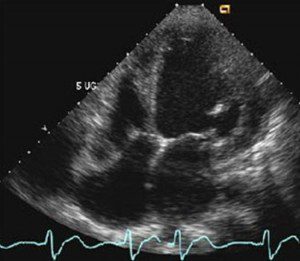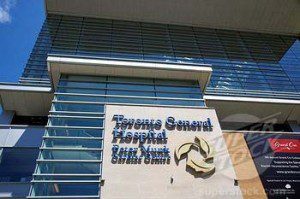
Throughout the day, following my operation, I was restless. In fact, that night – last Friday – I couldn’t sleep in the hospital ward where I was recovering. Coincidentally, however, the Registered Nurse on the night shift had a few minutes to spare as she recorded my blood pressure and heartbeat, so she stopped for conversation. We talked about her birthplace – East Africa – and how she’d come to Canada in search of a career. Eventually, I asked her what her name was.
“Meseret,” she said. “It means foundation. My father chose it because it was a strong name.”
Given her story, it seemed appropriate. Born in Ethiopia and raised with her siblings about the time Emperor Haile Selassie was ousted from power, Meseret’s family was able to take advantage of a scholarship made available by the incoming communist regime. She was able to leave the country to study and settle in Canada. And while her husband – a trained computer programmer from Ethiopia – turned to driving a cab to support the family, she earned her RN certificate and got a nursing position in the Peter Munk Cardiac Centre at Toronto General Hospital 14 years ago.
 I had never been to the Munk Cardiac Centre until last Wednesday. Indeed, I only expected to be there long enough for a consultation with Dr. Doug Cameron, a specialist in the maintenance of pacemakers.
I had never been to the Munk Cardiac Centre until last Wednesday. Indeed, I only expected to be there long enough for a consultation with Dr. Doug Cameron, a specialist in the maintenance of pacemakers.
Yes, for those of you who didn’t know, like about 120,000 other Canadians, I’ve had a pacemaker assisting my heart muscle (I don’t depend on the device to survive) for about a dozen years. Since September of 2002, the pacemaker has allowed me to walk the dog, run up stairs and play hockey several times a week, without a hitch. But when Dr. Cameron examined it last Wednesday, he determined that the pacemaker appeared to be re-emerging through the skin of my chest. Not that I was in any mortal danger because of this, but Dr. Cameron decided it had to come out.
Thus began an extraordinary journey. I watched (with the exception of the one hour I was knocked out by general anaesthetic during the operation) the most sophisticated heart specialty team leap into action to make the extraction of the pacemaker happen.
Not only nurses, but blood takers, cardio technologists, anaesthetists, pharmaceutical and nutritional specialists, surgeons, operating room team, and even porter and custodial staff – everybody – appeared to be absolutely focused and synchronized like clockwork as they moved me from prep to surgery to recovery. Not that the Munk Centre people were automatons, not at all. I mean, how did Roman, the guy who ferried me from one testing lab to another know that I enjoy hockey?
“You’re gonna love this,” he told me as he chauffeured me to my first x-ray appointment. “Who’s the first goalie to have a curved blade on his stick?” And when I shrugged, he said, “Why Terry Sawchuk, of course. And I own one of those sticks!”
There was Carlo, the ECG technologist, who expedited my admission papers, Jessica the pharmacy specialist who checked and double-checked for drug allergies, and Nadine from the kitchen staff, who took great delight in over-enunciating my formal birth certificate name, “Theodore.” (It still took a couple of days for her to bring me coffee in the morning instead of that tired-looking Red Rose tea pouch.)
There was Betty the blood nurse from Trinidad. There was Maggie who managed (when nobody else could) to gently remove my wedding ring for the operation. There was Ayesha, the echo-cardiogram stenographer, who video-taped my heart from 360 different angles. There was Marvie, who like Big Brother, insisted I had to wear the heart monitoring device 24 hours a day “because it was good for me,” and Johra, who deserves a medal for her patience leading me through a complete medical history, when I had a smart-ass answer for each of her questions.
But the Munk Centre team got the last laugh. Every morning I was there, at precisely 5:30, another specialist arrived, an attendant pushing a weigh scale on wheels.
“Good morning,” he said quietly. “Need to get your weight, please.”
“Hasn’t changed since yesterday,” I quipped.
He smiled politely, got his reading and moved to the next patient.
I hear a lot of complaints about health care in this province. I sympathize with many of those whose care has fallen through the cracks. I get angry too when the system seems to forget it’s serving people who not only need medical assistance but also empathy.
After my experience last weekend, I firmly believe that caring specialists such as those at Toronto General’s Munk Centre – as Meseret’s name suggested – are the foundation of exemplary health care.
Oh, and about the pacemaker. I guess my body – appearing to reject the thing – was telling us something. It’s no longer needed. It took a talented group of health-care professionals to recognize it, remove the pacemaker and get me on my way again.
Ted – So happy to hear that you’re doing well and that you had such a positive experience at the Peter Munk Cardiac Centre.
It takes a village to treat complex disease and- as you highlighted- we have a great, caring community at University Health Network.
Thank you for recognizing the effort, collaboration and interdisciplinary nature of the professionals involved in your care.
You can certainly see your expertise in the work you write. The world hopes for even more passionate writers like you who are not afraid to mention how they believe. Always follow your heart.